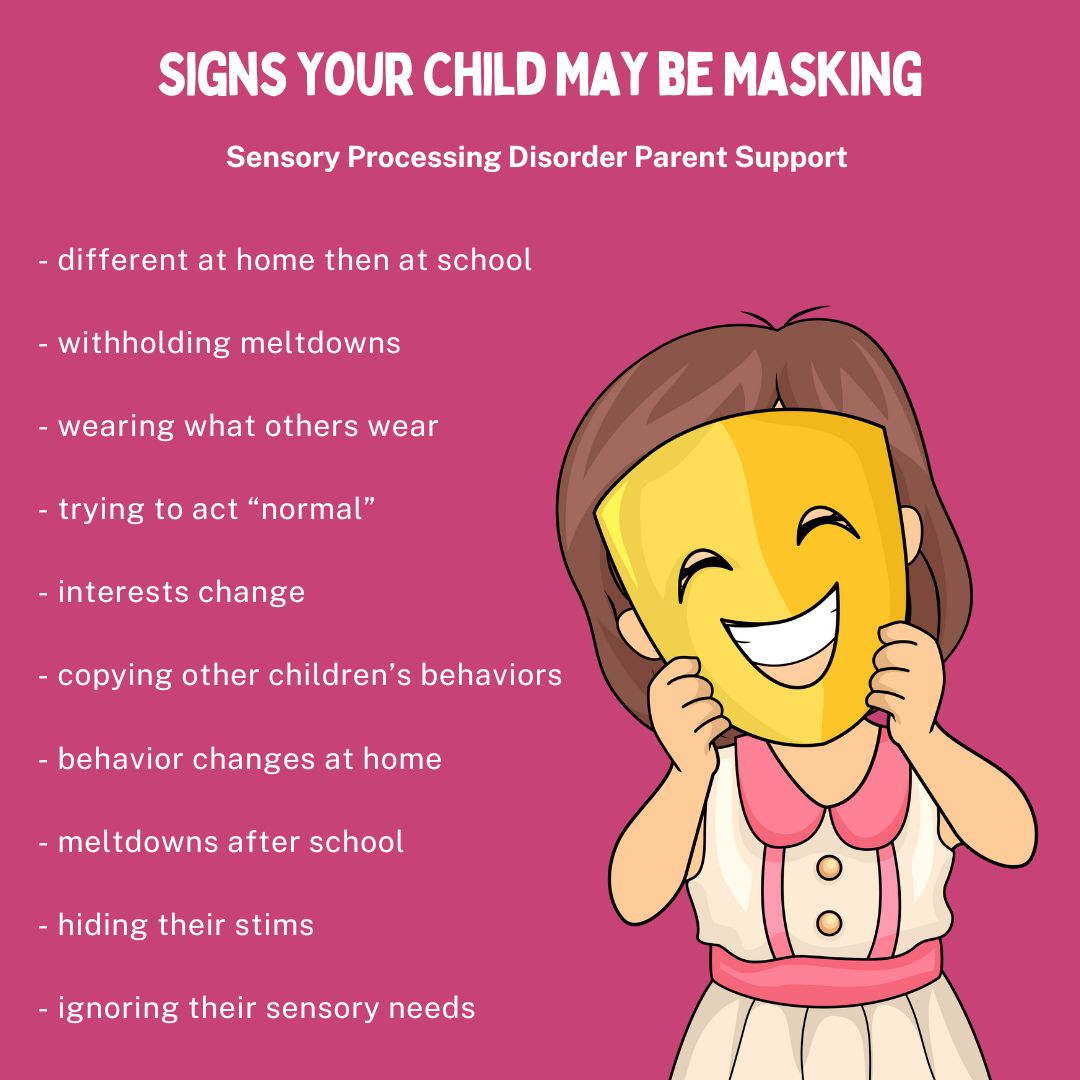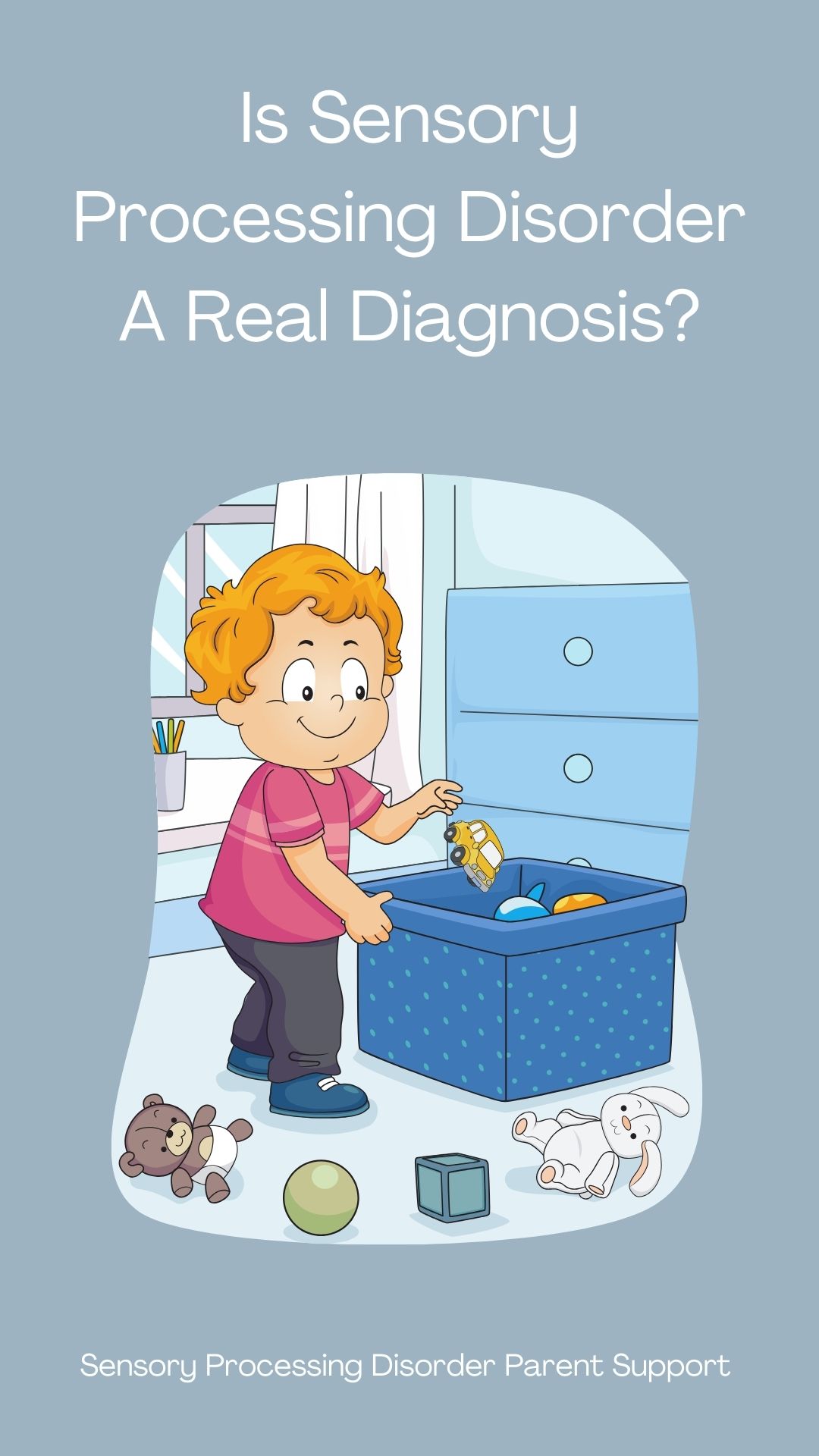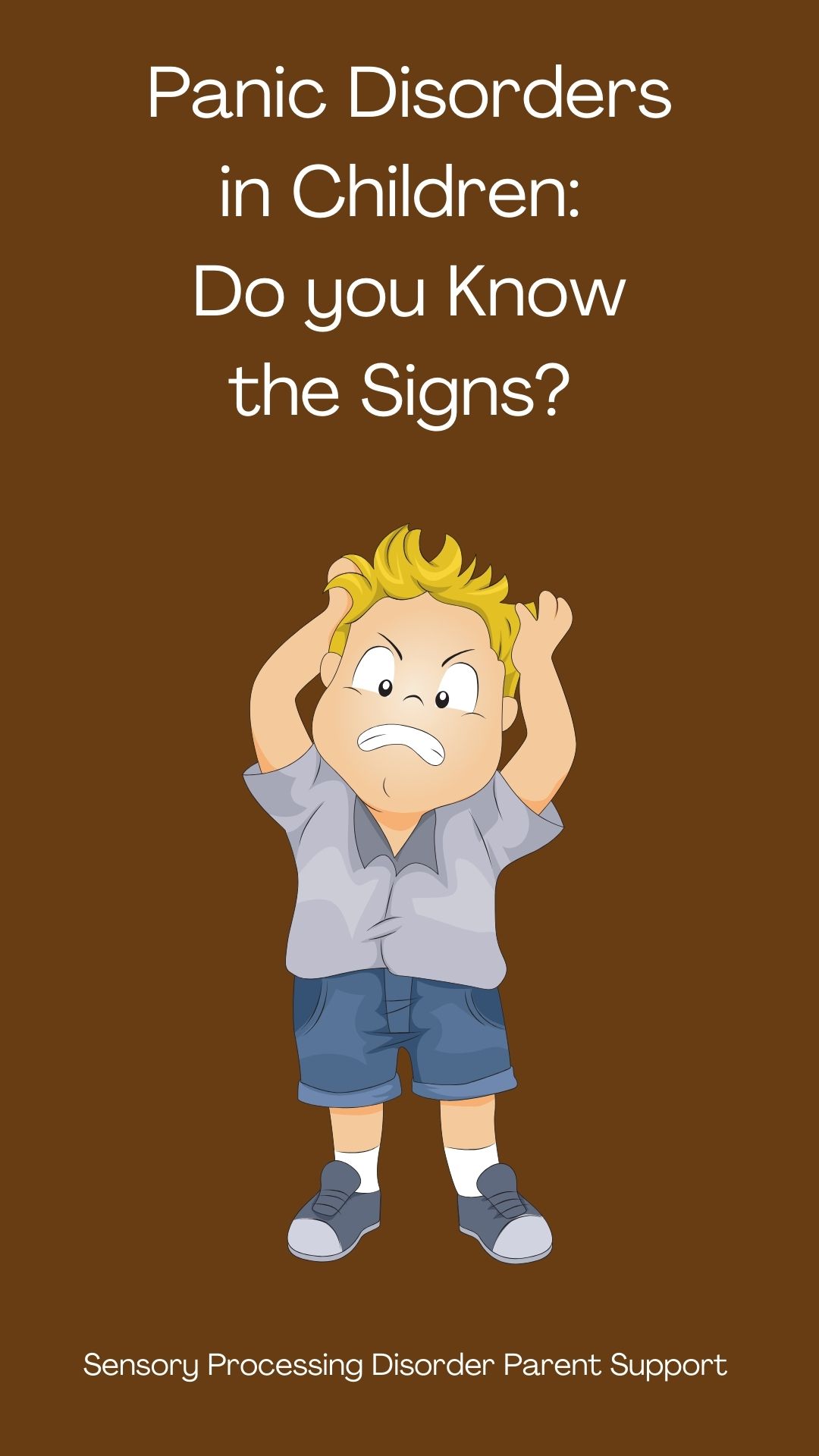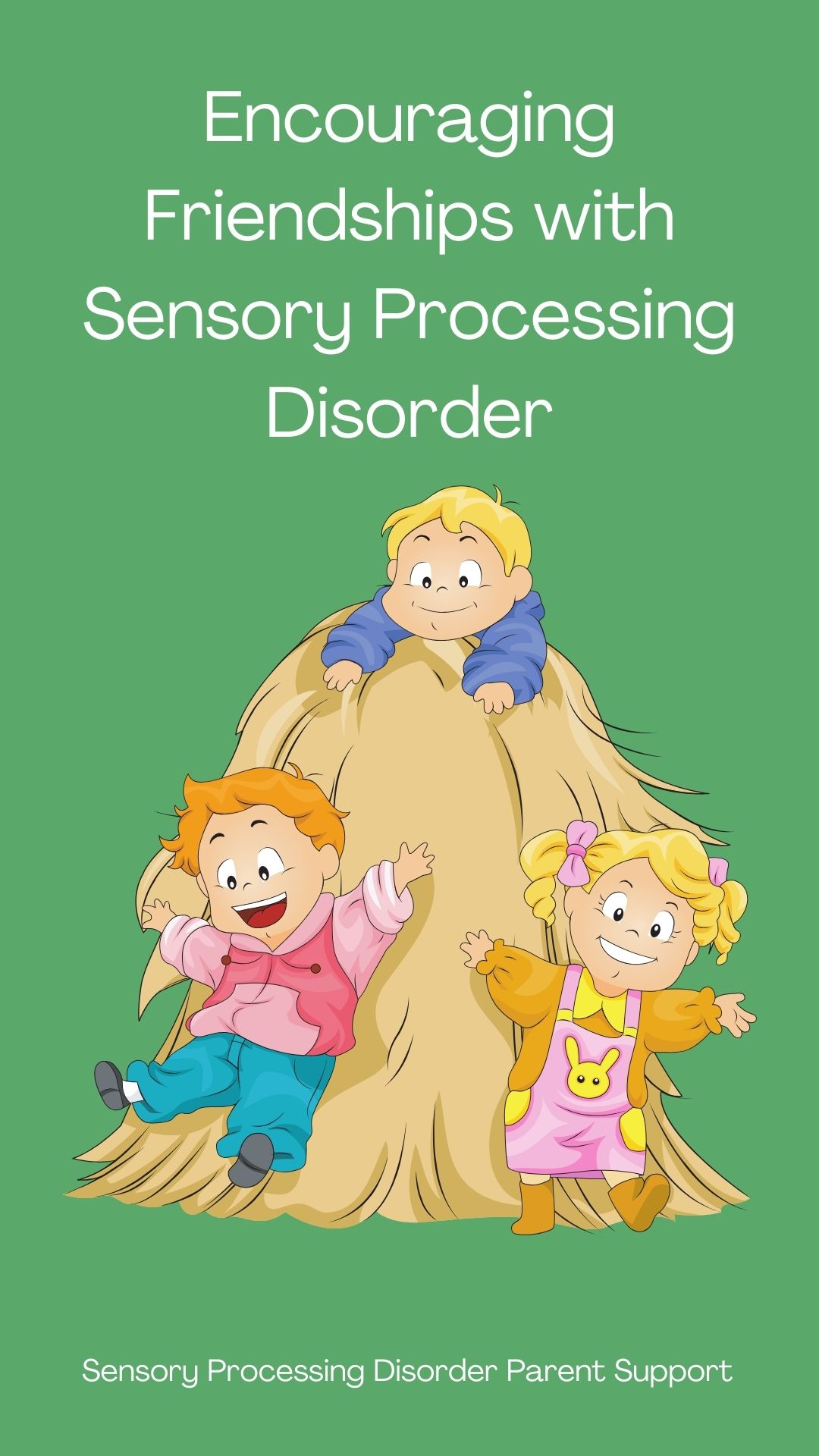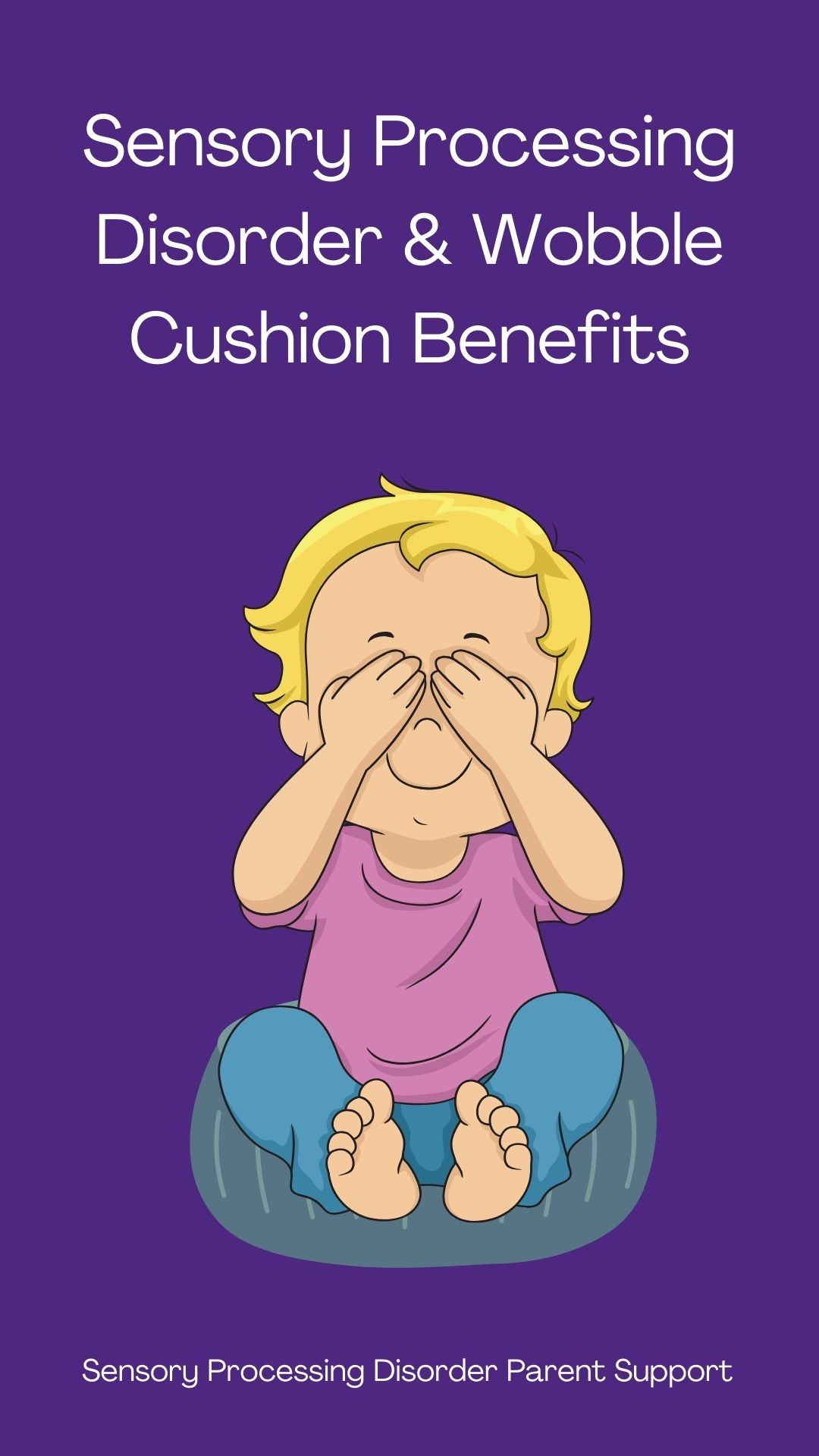
Sensory Processing Disorder Parent Support
Masking & Sensory Processing Disorder
Children with sensory differences ... painting the world beautiful.
Masking & Sensory Processing Disorder
Jeanette Loftus
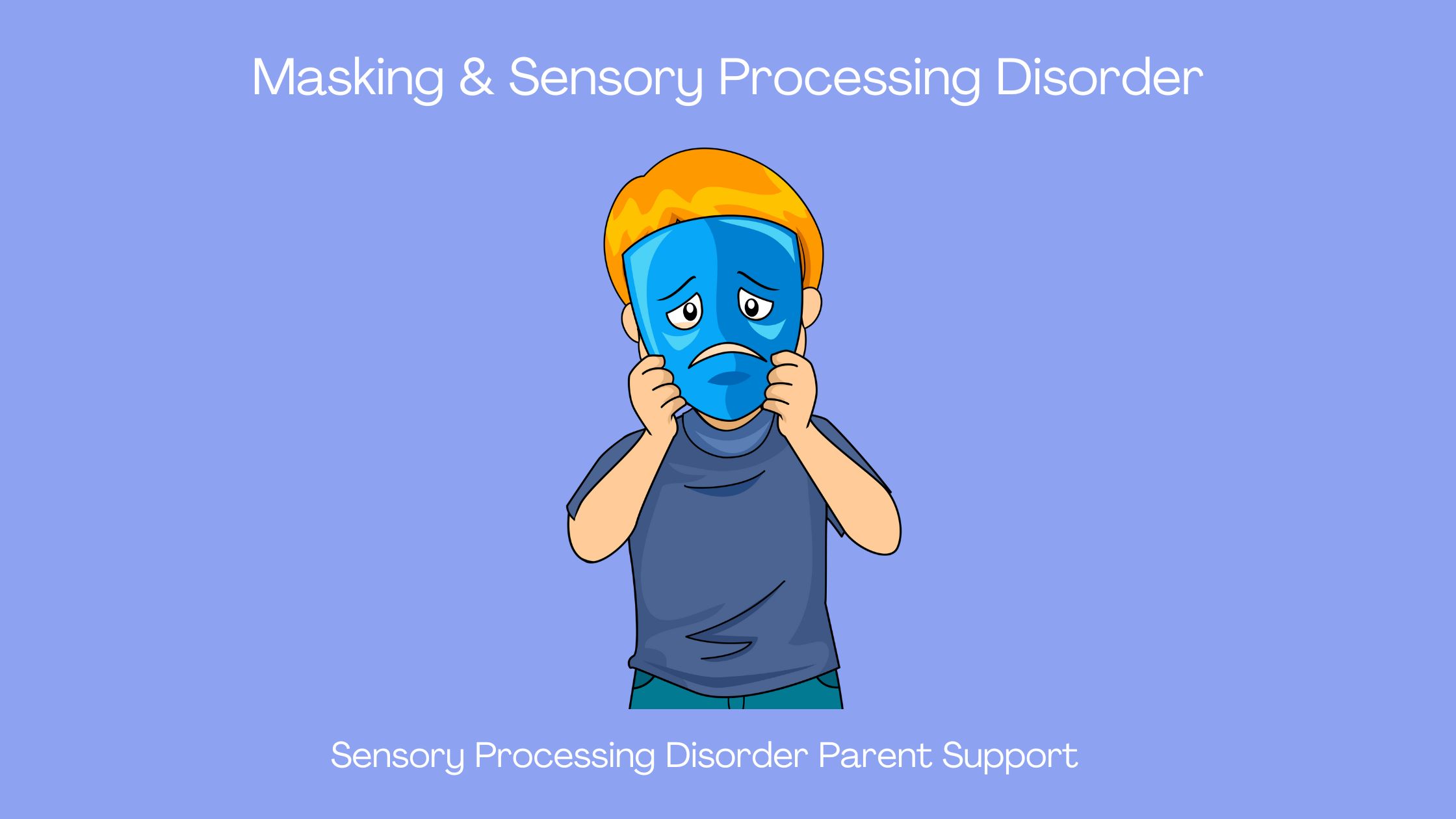
Children are known to be adaptable quick learners but for some children this adaptability comes at a very big cost. To live each day in a world that feels like it is meant for typical children, often child who have sensory processing disorder learn to mask their difficulties.
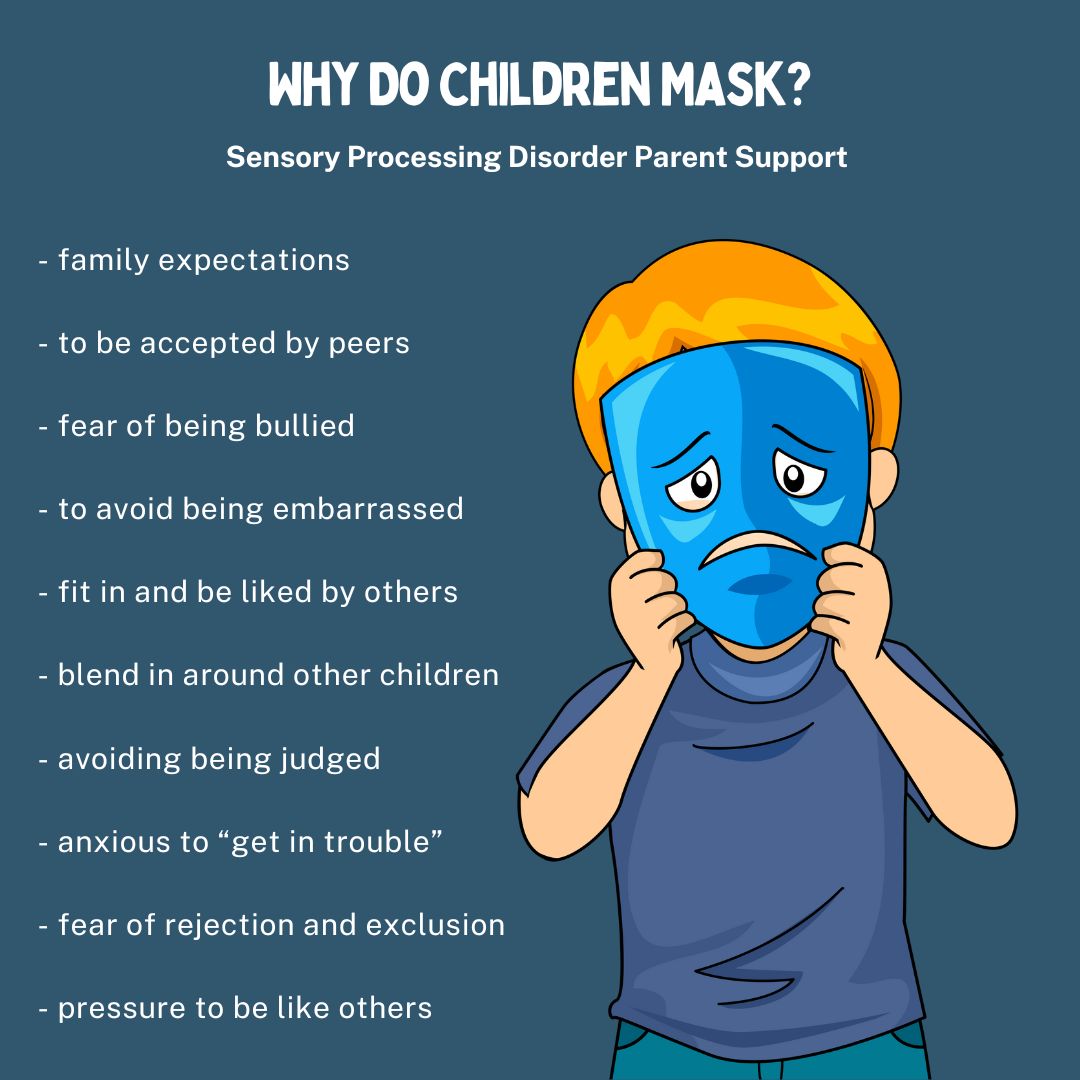
There can be a lot of negative affects for a child when they are masking, it does come at a cost and can affect a child in many different ways.
When a child is constantly masking sensory overload it can lead to emotional distress, anxiety and can cause them to feel depressed.
Struggling with different social situations while masking.
Masking can affect a child's focus, attention and learning and this can lead to struggling at school.
Unmet sensory needs throughout each day can cause a child to have challenging behaviors like aggression and meltdowns.
